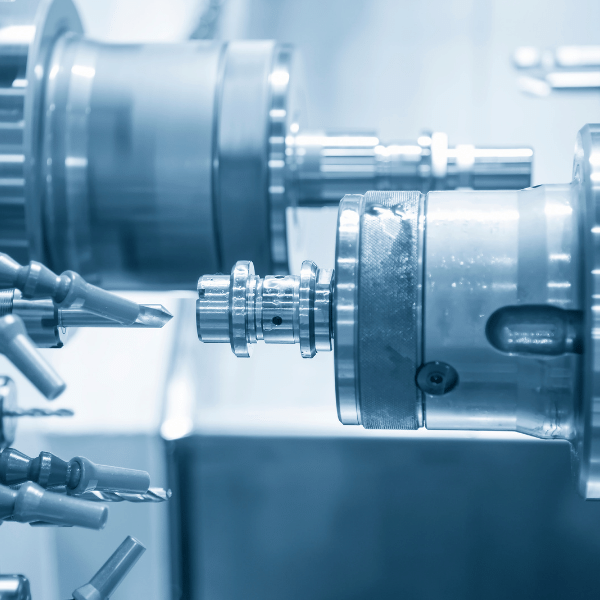Stainless Steel 316
Discover the benefits of Stainless Steel 316 and its many applications with ETCN’s expert insights. Start exploring now!
Details of Stainless Steel 316
| Name of Steel | Stainless Steel 316 |
|---|---|
| Alternative Names | UNS S31600, AISI 316, ASTM A193 Grade B8M, ASTM A276 Type 316 |
| Composition/Alloy | Chromium 16-18%, Nickel 10-14%, Molybdenum 2-3%, Iron balance |
| Mechanical Properties | Tensile Strength: 515 MPa (75,000 psi) |
| Yield Strength: 205 MPa (30,000 psi) | |
| Elongation at Break: 40% | |
| Hardness (Rockwell B): 79 | |
| Physical Properties | Density: 8.03 g/cm³ |
| Melting Point: 1375-1400 °C (2500-2550 °F) | |
| Thermal Conductivity: 16.3 W/m·K at 100°C | |
| Specific Heat Capacity: 0.50 J/g·K | |
| Thermal Properties | Coefficient of Thermal Expansion: 16.5 µm/m·K |
| Thermal Conductivity: 16.3 W/m·K at 100°C | |
| Electrical Properties | Electrical Conductivity: 1.25 × 10^6 S/m |
| Post Treatments | Solution annealing, cold working, aging, stress relieving |
| Common Applications | Chemical processing equipment, food processing equipment, medical devices, marine hardware, heat exchangers, pharmaceutical equipment, aerospace components |
| Advantages/Disadvantages | Good corrosion resistance in both low and high temperatures, excellent weldability and formability, excellent strength and toughness at cryogenic temperatures, higher cost compared to other stainless steel grades, susceptible to crevice and pitting corrosion in chloride environments |
Blogs related to Stainless Steel Machining
Top 12 China CNC Machining Service Providers in 2023 You’ve...
For many manufacturers, CNC machining steel is crucial to producing...
Unlock the highest level of precision and longevity for machined...
CNC Machining has become an increasingly popular manufacturing solution, but...
Stainless Steel 316 : Frequently Asked Question
• In [specific industry], 316 stainless steel has many applications due to its excellent corrosion resistance, strength, and formability.
• Its composition includes 16-18% chromium, 10-14% nickel, 2-3% molybdenum, trace amounts of nitrogen, and other elements that improve its corrosion resistance.
• It is a preferred material for producing components exposed to corrosive compounds, such as tanks, pipes, valves, and pharmaceutical equipment, due to its superior strength-to-weight ratio compared to other grades of stainless steel.
• This grade is also suitable for cold working processes such as bending and roll forming, making it reliable for tight tolerance parts requiring precision fabrication.
• Additionally, the higher chromium content in this type of stainless steel makes it resistant to oxidation at high temperatures making it ideal for extreme conditions, including marine settings and food processing facilities, with minimal maintenance required over long lifespans.
• 304 stainless steel comprises chromium and nickel, with high corrosion resistance but lower strength than other stainless steels. It is suitable for applications where environmental conditions, such as hot water tanks and kitchen countertops, are not an issue.
• 316 stainless steel has higher chromium content than 304 and offers superior corrosion resistance in harsher environments while being able to withstand heavier loads and temperatures up to 1000 degrees Celsius. It is often used in marine components, pharmaceutical equipment, aerospace parts, oil refineries, and other industrial projects.
• Factors to consider when choosing the correct form of stainless steel include forming/fabrication requirements, temperature ratings, material strength/load-bearing capacity, and anticipated environmental conditions; identification markings can also give clues as to the type of metals involved.
• 316 Stainless Steel is considered the gold standard in grade selections for its superior corrosion resistance.
• The increased molybdenum content, greater amounts of chromium and nickel, and improved heat resistance make it an ideal choice for a wide range of industries and applications requiring protection against harsh elements or liquids.
• Its unmatched durability makes it suitable for marine environments, chemical storage tanks, aerospace applications, food processing facilities, oil refineries, and more.
• Despite its higher cost compared to other metals, 316 stainless steel offers cost-effectiveness over time and remains the gold standard for quality performance under demanding conditions.
• Stainless Steel 316 is a highly durable austenitic stainless steel offering improved corrosion resistance and excellent mechanical properties.
• Common industries that use SS316 include marine, chemical processing, aerospace parts, electrical equipment, surgical instruments, cookware, and jewelry.
• Despite its benefits, SS316 may rust or discolor when exposed to certain acids or strong chemicals over extended periods and its cost could be significantly higher than other types of stainless steel, depending on the alloy composition.
• To ensure maximum efficiency from this material, one should consider its composition traits as well as potential limitations and seek guidance from manufacturers on suitable alloys for specific applications to minimize costs.
• Grade 316 stainless steel contains higher levels of chromium and nickel and 2-3% molybdenum, providing superior corrosion resistance, strength, and electrical conductivity.
• 18-8 grade stainless steel has less nickel than 316 grade. It provides good corrosion resistance in non-hostile conditions or low concentrations of corrosive agents and a lower thermal expansion coefficient, making it suitable for products handled frequently.
• Selection of the correct stainless steel grade must consider composition, properties, cost, availability, and environmental considerations.
• Each grade offers distinct advantages, such as mechanical strength or flexibility, depending on the application requirements.
• Careful assessment is necessary to ensure value from the chosen material within certain limits dictated by cost-effectiveness and resource management throughout the entire production process.



